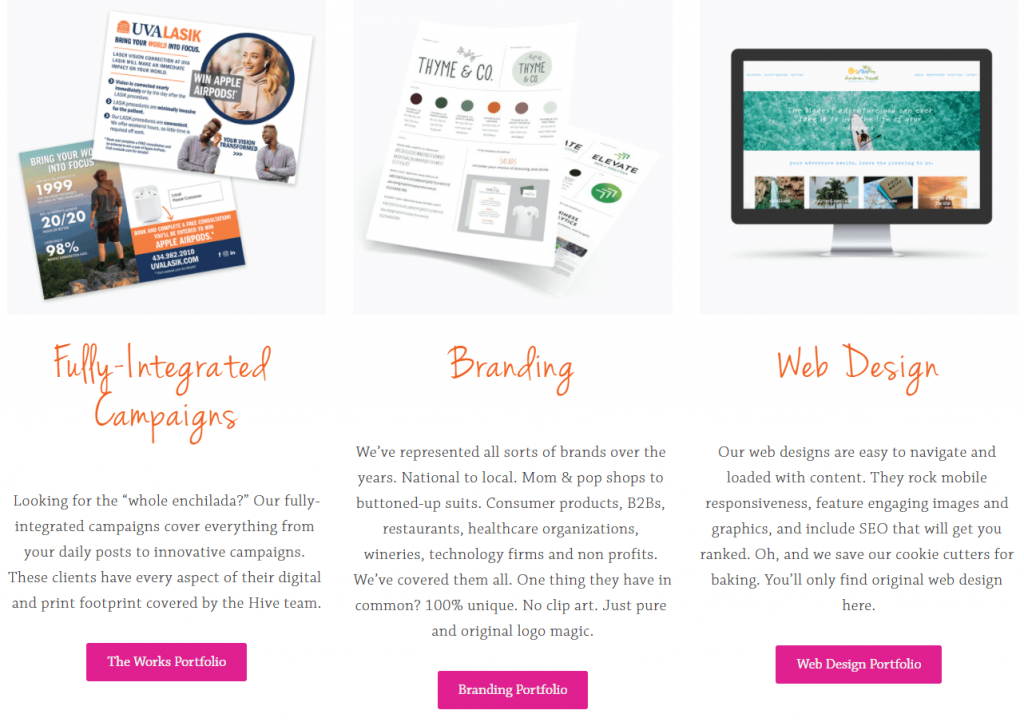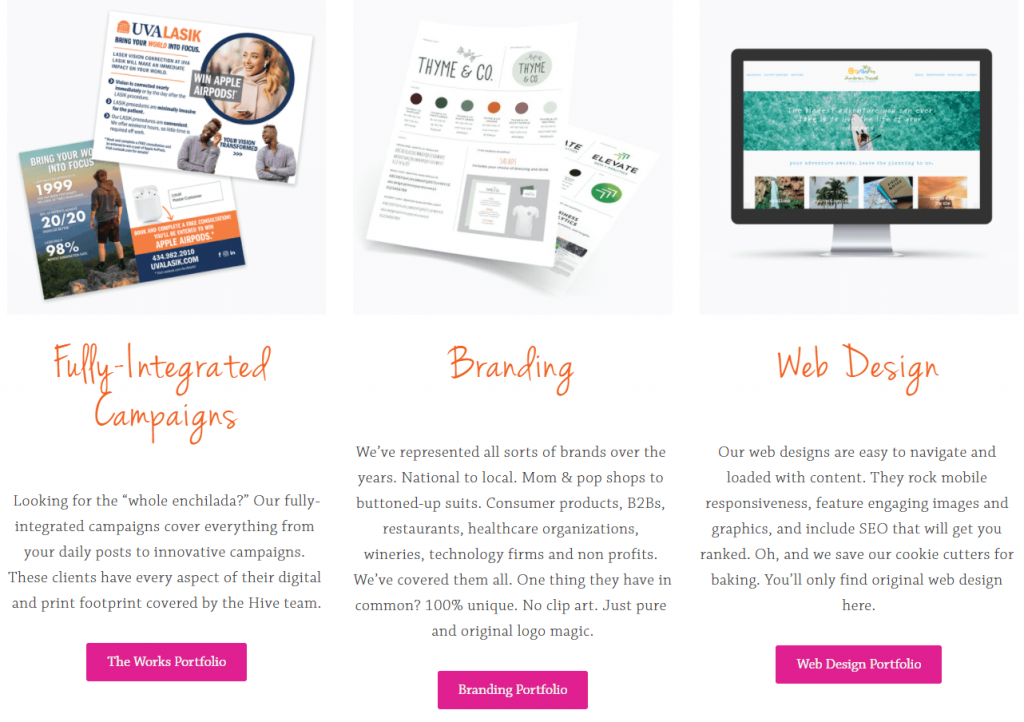So, you want to know how to build a digital marketing portfolio, huh? Well, you’ve come to the right place! In this article, we’re going to dive into the exciting world of digital marketing and explore the best strategies for creating a killer portfolio that will make you stand out from the crowd. Whether you’re a seasoned marketer looking to showcase your skills or a newbie trying to break into the industry, we’ve got you covered. So, grab your laptop and get ready to take your digital marketing career to the next level!
When it comes to building a digital marketing portfolio, there are a few key things you need to keep in mind. First and foremost, you want to showcase your expertise and demonstrate your ability to drive results. Potential clients and employers want to see tangible evidence of your skills, so be sure to include case studies, campaign metrics, and success stories that highlight your achievements. Additionally, it’s important to showcase your versatility and adaptability in the ever-evolving digital landscape. Include examples of different marketing channels you’ve worked with, such as social media, email, SEO, and content marketing, to demonstrate your broad skill set. By presenting a well-rounded portfolio that showcases your creativity, analytical prowess, and results-driven mindset, you’ll be well on your way to landing your dream digital marketing gig. So, let’s dive in and discover how to build a digital marketing portfolio that wows!
How to Build a Digital Marketing Portfolio?
- Identify your goals and target audience.
- Choose the digital marketing skills you want to showcase.
- Create a personal website or online portfolio.
- Showcase your work and results with case studies and testimonials.
- Network and collaborate with other professionals in the industry.
- Continuously update and improve your portfolio with new projects and achievements.

Building a Digital Marketing Portfolio: A Guide to Success
Building a digital marketing portfolio is an essential step for professionals looking to showcase their skills and expertise in the industry. In today’s digital age, having a strong portfolio can make all the difference in landing new clients or securing a job. But how exactly do you go about building a digital marketing portfolio that stands out from the competition? In this article, we will guide you through the process, providing valuable insights and tips to help you create a portfolio that impresses potential employers or clients.
1. Define Your Niche and Target Audience
Before you start building your digital marketing portfolio, it’s crucial to define your niche and target audience. Having a clear understanding of who you want to work with and the specific industry you specialize in will help you tailor your portfolio to appeal to your ideal clients. Whether you focus on social media marketing, SEO, content creation, or other areas of digital marketing, make sure to highlight your expertise and showcase relevant projects in your portfolio.
When creating your portfolio, consider the specific needs and pain points of your target audience. What challenges do they face, and how can you demonstrate your ability to solve them? By addressing these questions, you can strategically position yourself as the ideal digital marketing professional for potential clients or employers.
1.1 Highlight Your Specialization
Within the digital marketing field, it’s beneficial to highlight your specialization. If you have expertise in a specific area, such as email marketing or paid advertising, make sure to showcase projects that demonstrate your skills in that particular field. This will not only help you stand out but also attract clients who are specifically looking for someone with your unique expertise.
When presenting your specialization in your portfolio, provide details about the specific strategies and techniques you have implemented, along with any measurable results. This will give potential clients or employers a clear understanding of your capabilities and the value that you can bring to their business.
1.2 Tailor Your Portfolio to Your Target Audience
To make your portfolio more appealing to your target audience, consider their industry, goals, and pain points. For example, if you are targeting small businesses, focus on showcasing projects where you have helped similar businesses increase their online presence or generate leads. On the other hand, if you are targeting e-commerce companies, highlight projects that demonstrate your ability to drive sales through digital marketing strategies.
By tailoring your portfolio to your target audience, you can effectively communicate your understanding of their specific needs and position yourself as the right person to help them achieve their goals.
2. Choose the Right Platform
When it comes to building a digital marketing portfolio, choosing the right platform is crucial. There are various options available, ranging from website builders to portfolio-specific platforms. Consider the pros and cons of each platform, and choose the one that best aligns with your goals and budget.
2.1 Website Builders
Website builders like WordPress, Wix, or Squarespace offer easy-to-use templates and customization options, making them suitable for beginners. These platforms allow you to showcase your work, provide an overview of your skills and experience, and include contact information for potential clients or employers.
When using a website builder, make sure to choose a clean and professional template that reflects your personal brand. Keep the design simple and user-friendly, allowing your work to take center stage. Don’t forget to optimize your portfolio for mobile devices, as an increasing number of people access the internet through smartphones.
2.2 Portfolio-Specific Platforms
Portfolio-specific platforms like Behance, Dribbble, or LinkedIn ProFinder are designed specifically for showcasing creative work. These platforms often have a built-in community of professionals and potential clients, making them a great place to network and gain exposure.
Using a portfolio-specific platform can also help you take advantage of search engine optimization (SEO) opportunities. By optimizing your profile and projects with relevant keywords, you can increase your chances of being discovered by potential clients or employers searching for specific skills or expertise.
3. Showcase Your Best Work
Your portfolio is a representation of your skills and expertise, so it’s crucial to showcase your best work. Select projects that highlight your strengths and achievements, and provide detailed explanations of your role and the results you achieved. Use visuals, such as screenshots or videos, to demonstrate the impact of your work.
3.1 Include Case Studies
To provide a deeper understanding of your work and the value you can bring to clients or employers, include case studies in your portfolio. Case studies allow you to showcase the challenges you faced, the strategies you implemented, and the measurable results you achieved.
When creating case studies, focus on the problem-solving aspect of your work. Explain the specific challenges you encountered, the strategies you developed, and how your solutions led to positive outcomes. Including quantitative data, such as increased website traffic or revenue growth, can further emphasize the effectiveness of your strategies.
3.2 Demonstrate a Variety of Skills
While it’s important to showcase your expertise in a specific area, it’s also beneficial to demonstrate a variety of skills within the digital marketing field. This shows potential clients or employers that you are well-rounded and adaptable. For example, if you specialize in content marketing, include projects that highlight your skills in SEO, social media management, and email marketing.
By demonstrating a range of skills, you can position yourself as a versatile digital marketing professional who can handle various tasks and challenges. This can be particularly appealing to small businesses or startups that require a multi-faceted approach to their marketing efforts.
4. Request Testimonials and Recommendations
To further enhance your portfolio’s credibility, request testimonials and recommendations from past clients or employers. These testimonials provide social proof and can help build trust with potential clients or employers who are considering working with you.
When requesting testimonials, ask clients or employers to highlight specific aspects of your work that they appreciated or found valuable. This will give potential clients or employers a better understanding of the value you can bring to their business.
4.1 Display Testimonials Strategically
Once you have received testimonials, strategically display them throughout your portfolio. Consider placing them alongside relevant projects or case studies to provide context and reinforce the positive impact of your work. Displaying testimonials prominently on your homepage or about page can also help build trust and credibility from the moment potential clients or employers land on your portfolio.
4.2 Utilize LinkedIn Recommendations
LinkedIn recommendations can be a powerful addition to your portfolio, as they are written by professionals within your industry. Request recommendations from colleagues, clients, or employers who can speak to your skills, work ethic, and results. These recommendations can be displayed on your LinkedIn profile and linked to your portfolio, further strengthening your credibility.
5. Continuously Update and Improve Your Portfolio
Building a digital marketing portfolio is an ongoing process. As you gain new skills and work on new projects, make sure to update your portfolio accordingly. Remove outdated or less relevant projects and replace them with your latest and most impressive work.
Additionally, regularly review and improve your portfolio’s design and content. Pay attention to user experience and ensure that your portfolio is easy to navigate and visually appealing. Consider incorporating visual elements, such as infographics or videos, to make your portfolio more engaging and memorable.
By continuously updating and improving your portfolio, you can demonstrate your commitment to growth and showcase your latest achievements to potential clients or employers.
6. Promote Your Portfolio Online
Having a great digital marketing portfolio is only half the battle. To maximize its impact, you need to promote it effectively online. Here are a few strategies to help you get started:
6.1 Leverage Social Media
Share your portfolio on social media platforms like LinkedIn, Twitter, and Instagram. Use relevant hashtags and tag industry influencers or companies that you would like to work with. Engage with others in your industry by sharing valuable insights and commenting on their posts. This will help you build a network and increase your visibility within the digital marketing community.
6.2 Guest Blogging
Contribute guest articles to reputable industry blogs or publications. Include a link to your portfolio in your author bio, allowing readers to learn more about you and your work. Guest blogging not only helps you establish yourself as a thought leader but also drives traffic to your portfolio.
6.3 Network Offline
Attend industry events, conferences, or meetups to connect with other professionals in the digital marketing field. Exchange business cards and follow up with potential clients or employers, directing them to your portfolio. Building meaningful relationships offline can lead to valuable opportunities and referrals.
In conclusion, building a digital marketing portfolio requires careful planning and consideration. Define your niche, choose the right platform, showcase your best work, and continuously update and promote your portfolio. By following these steps and implementing the strategies outlined in this article, you can create a digital marketing portfolio that effectively highlights your skills and attracts potential clients or employers. So, start building your portfolio today and take your digital marketing career to new heights.
Key Takeaways: How to Build a Digital Marketing Portfolio?
- Start by identifying your goals and target audience.
- Showcase your skills and expertise through relevant projects and case studies.
- Include quantifiable results to demonstrate the impact of your work.
- Continuously update and optimize your portfolio with new accomplishments.
- Network and seek feedback from industry professionals to enhance your portfolio.
Frequently Asked Questions
What is a digital marketing portfolio?
A digital marketing portfolio is a collection of your work that showcases your skills, expertise, and accomplishments in the field of digital marketing. It includes examples of campaigns, strategies, and results that you have achieved for clients or employers. A well-crafted portfolio demonstrates your ability to create and implement effective digital marketing strategies and can help you stand out from the competition when applying for jobs or pitching to potential clients.
Building a digital marketing portfolio involves curating and organizing your best work to create a compelling narrative that highlights your strengths and capabilities. It should include a variety of projects, such as social media campaigns, content marketing efforts, search engine optimization (SEO) initiatives, and any other relevant digital marketing activities that you have been involved in.
How do I choose the right projects for my portfolio?
When selecting projects for your digital marketing portfolio, it’s important to choose ones that best showcase your skills and achievements. Consider the following factors:
1. Relevance: Choose projects that align with the type of work you want to do or the industry you are targeting. For example, if you are interested in social media marketing, include examples of successful social media campaigns you have managed.
2. Impact: Highlight projects that have generated tangible results, such as increased website traffic, higher conversion rates, or improved brand awareness. Quantify your achievements with metrics whenever possible.
3. Diversity: Include a variety of projects that demonstrate your versatility and range of skills. This could include different types of campaigns, target audiences, or industries.
4. Quality: Select projects that reflect your best work. Ensure that the content, design, and overall execution are of high quality and showcase your ability to deliver professional digital marketing services.
How should I present my digital marketing portfolio?
Presenting your digital marketing portfolio in a professional and visually appealing manner is crucial to make a positive impression on potential employers or clients. Here are some tips to consider:
1. Website or Online Portfolio: Create a dedicated website or online portfolio to showcase your work. This allows you to have full control over the design and layout, and it also gives you the opportunity to demonstrate your web development skills. Make sure the website is well-organized, easy to navigate, and mobile-friendly.
2. Case Studies: Provide detailed case studies for each project in your portfolio. Include information about the objectives, strategies, tactics, and results achieved. Use visuals, such as graphs or screenshots, to illustrate your success.
3. Client Testimonials: Include testimonials or feedback from clients or employers to add credibility to your portfolio. Highlight positive comments that emphasize your expertise, professionalism, and the impact of your work.
4. Updated Content: Keep your portfolio up to date by regularly adding new projects and removing outdated ones. This shows that you are actively engaged in the industry and continuously improving your skills.
How can I gain relevant experience for my digital marketing portfolio?
If you’re just starting out or looking to gain more experience in digital marketing, there are several ways to build your portfolio:
1. Personal Projects: Create your own digital marketing campaigns for a fictitious business or a personal project. This allows you to showcase your creativity, strategic thinking, and technical skills.
2. Volunteer Work: Offer your services to non-profit organizations or small businesses that may not have the budget for professional digital marketing services. This provides an opportunity to work on real projects and gain practical experience.
3. Internships or Entry-Level Positions: Apply for internships or entry-level positions in digital marketing agencies or companies. This allows you to learn from experienced professionals, work on real client projects, and add valuable experience to your portfolio.
4. Freelance Work: Take on freelance digital marketing projects to gain hands-on experience and build your portfolio. Offer your services at a discounted rate or even for free initially to attract clients and build a reputation.
How can I showcase my digital marketing skills without client work?
If you don’t have client work to showcase in your digital marketing portfolio, there are still ways to demonstrate your skills and expertise:
1. Personal Branding: Build a strong personal brand online by creating and maintaining an active presence on social media platforms. Share valuable content, insights, and tips related to digital marketing to showcase your knowledge and expertise.
2. Blogging or Content Creation: Start a blog or create content on platforms like Medium or LinkedIn to share your thoughts, ideas, and experiences in digital marketing. This allows you to demonstrate your writing skills, industry knowledge, and ability to create engaging content.
3. Side Projects: Undertake personal side projects that allow you to practice and showcase your digital marketing skills. This could include creating and promoting your own website, running social media campaigns for a hobby or interest, or managing an online community.
4. Certifications and Courses: Complete relevant certifications or online courses in digital marketing. Display these certifications prominently in your portfolio to demonstrate your commitment to learning and staying updated with industry best practices.
Remember, the key is to demonstrate your skills, knowledge, and passion for digital marketing, even if you haven’t had the opportunity to work with clients yet.
HOW TO BUILD ONLINE PORTFOLIO IN DIGITAL MARKETING (3 WAYS!)
Final Summary: Building Your Digital Marketing Portfolio
So there you have it, my friend! You’ve reached the end of our journey on how to build a digital marketing portfolio. I hope you’ve found this guide to be informative and inspiring, giving you the confidence to showcase your skills and expertise in the digital marketing world.
Remember, when it comes to creating your portfolio, it’s all about presenting your work in the best possible light. Highlight your achievements, showcase your projects, and demonstrate your ability to deliver results. Use engaging visuals, compelling copy, and captivating case studies to grab the attention of potential clients or employers.
Furthermore, don’t forget the power of optimization. Incorporate relevant keywords throughout your portfolio to increase its visibility in search engine results. By following these tips and strategies, you’ll be well on your way to building a digital marketing portfolio that stands out from the crowd.
So, what are you waiting for? Start curating your portfolio today and let your digital marketing expertise shine. With the right combination of creativity, strategy, and optimization, you’ll be well-positioned to take your career to new heights. Good luck, and may your portfolio be a testament to your skills and achievements in the exciting world of digital marketing!







